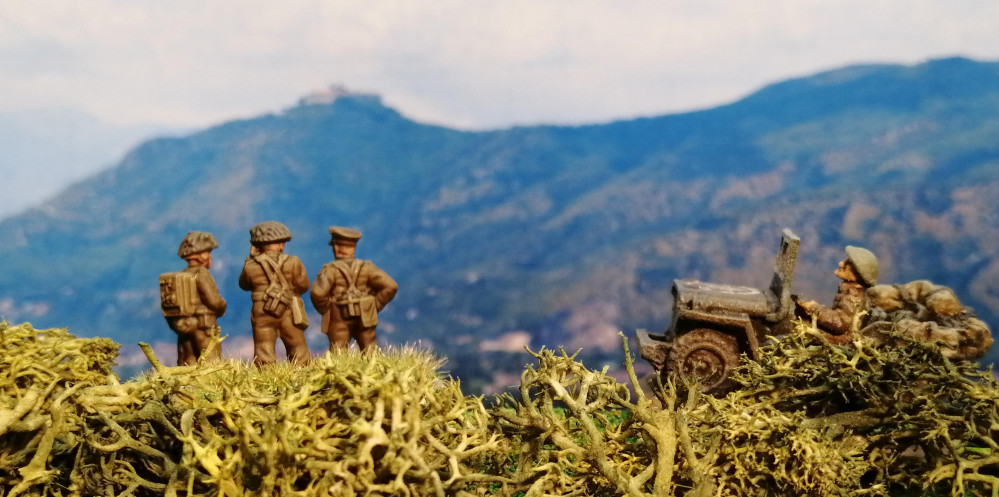
75th Anniversary of the Battle of Monte Cassino and Northern Italy (Gaming The Battles)
Battle Report - Operation Fischfang, Breaking Through to the Beach
Background
For this battle, we’ll take a semi historical perspective and inject a little ‘beer and pretzels’ gaming. Operation Fischfang was a German Counter Offensive against the Anzio beach landings in February 1944. This battle will focus on the final push as the German 26th Panzer Division came close to pushing the Allies back to the landing beaches. The counter offensive was launched down the Via Anziate, the main road running South from Campoleone and the 26th Panzer were able to include some new Tiger I tanks alongside a battalion of Panthers, so a good opportunity to bring out the big cats! The Luftwaffe also ran near continuous air attacks during the offensive, so this will need to be represented in the game.
The offensive was hugely costly for the Germans and by the time they reached the last Allied line of defence, their casualty rates were running high. To represent this, we will run mixed platoons of tanks and platoons with reduced numbers.
For the Allies, historically it was the naval support coupled with artillery units firing over open sights that actually stopped the offensive. These will need to feature in the battle.
Forces
German Forces (26th Panzer Division Supported by 4th Fallschirmjager):
HQ: 2 Panther G tanks
Panzer Platoon: Tiger I and 2 Panzer IV H
Panzer Platoon: 2 Panzer IV H
Three Fallschirmjager Platoons: HQ and two Squads per platoon (1HQ stand and 6 infantry stands)
Falschirmjager MG platoon (two stands)
Falschirmjager 7.5cm Gun Platoon (2 stands)
2 Stuka JU87 Dive Bombers in support (operating as a single platoon, with both planes arriving together)
Allied Forces (British 1st Infantry Division):
HQ: 1iC and 2iC infantry stands
Two Rifle/MG Infantry Platoons in trenches
6pdr Anti Tank Gun Platoon (4 guns but split and operating separately)
MG Platoon (4 stands, split and operating as two separate platoons)
SP Anti Tank Platoons – 2 M10 armed with the M7 3” AT gun
Medium Battery Royal Artillery – 4 BL5.5” Artillery guns
4 Minefield sections (8” per section)
3 Barbed Wire sections (8” per section)
2 HMG nests
Victory Conditions
For this battle, they will be kept simple. The Germans are looking to break through to the beach and so an objective counter is placed 6” from the Allied table edge on the Via Anziate. If at the start of any player turn a German unit is within 4” and no Allied unit is within 4”, the German player wins.
Scenario Special Rules:
The Stuka appears on a roll of 5+ and is deployed in the movement phase. It cannot attack if there are German forces within 16” of the intended target.
The early spring rains had started and the battlefield was getting turned into a quagmire. Any movement not on the road is in ‘area terrain’ for the purposes of movement rates. Furthermore, tanks and vehicles must roll a 2+ each time they move otherwise they become bogged down for the turn and unable to move.
The heavy rain stops all Movement Orders as defined in the FoW rulebook.
No artillery attacks in round 1.
British Artillery have ranged in on the road prior to the battle. A ranged in marker can be placed anywhere on the road and no spotter is required to fire on this point.
On even numbered turns, at the start of the Allied turn the naval bombardment arrives. This is randomly placed on the table and cannot land in the Allied half of the table. To randomly generate the landing point, 8d6 less 8” are rolled to determine the depth from the German starting edge. 10d6 less 10” is used for the width. Using a standard template, everything under it is automatically hit with a AT5, FP 2+ shot. Infantry saves are taken as normal.
Key to the Symbols on the map:
I’ve tried to use the standard NATO symbols where possible.
Infantry platoons are colour coded to the platoon with Fallschirmjager platoons starting F and British 1st Division starting B.
Boxes marked 1 and 2 relate to the MG Nests.
Boxes containing OOO are barbed wire. Boxes containing TTT are trench lines.
White background tank units are German. The one containing the red circle is the 1iC and 2iC Panther tanks. Unit with the heavy circle is the panzer platoon containing the Tiger 1.
Pictures of the initial deployment can be seen below.





























![How To Paint Moonstone’s Nanny | Goblin King Games [7 Days Early Access]](https://images.beastsofwar.com/2024/12/3CU-Gobin-King-Games-Moonstone-Shades-Nanny-coverimage-225-127.jpg)











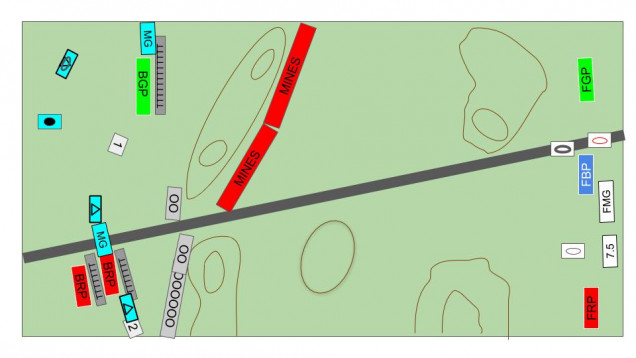
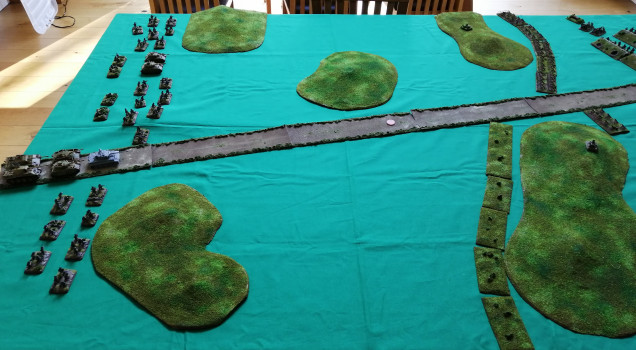
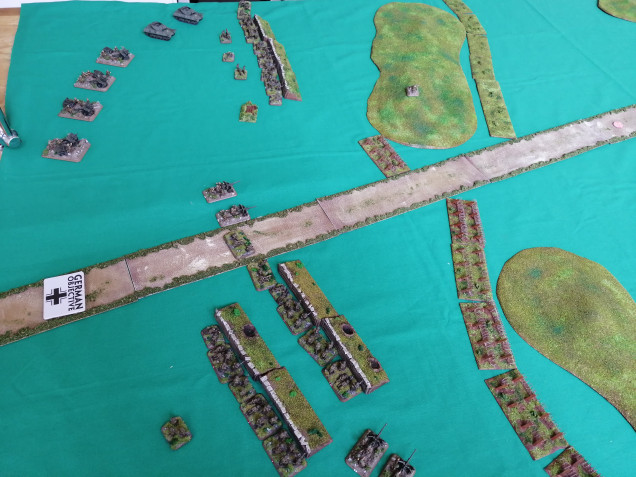
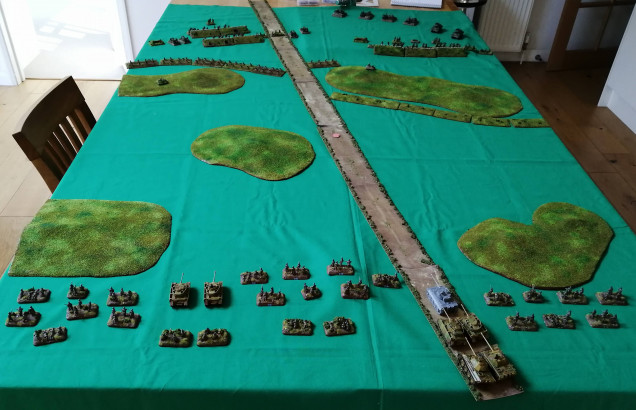































Leave a Reply